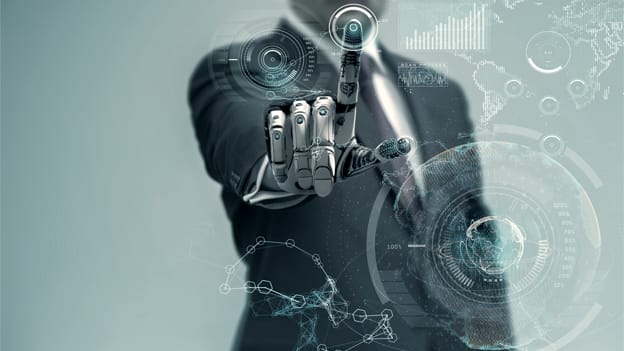Building the Next-Gen Organization

Change is the only constant, and this has never been truer than today, where businesses need to constantly reinvent the wheel to stay relevant for the present and future. Accordingly, the very “Future of Work” is taking a 360 degrees turn, and HR practitioners and business managers are forced to imbibe this new work paradigm. This significant shift is inviting a lot of talk about about the evolution of work and what it means for masses. Some experts have gone so far as to condemning automation and artificial intelligence as socio-economic destructors. Here is an objective look at the Future of Work, as it plays out for both employees and employers.
The Construct of the Future Organization
On a broad level, a new order of work will emerge based on the following five courses of change:
- A truly connected world: The rise of connected devices and emerging technologies like the Internet of Things, Artificial Intelligence (AI) and Data & Analytics has enabled seamless connectivity at the workplace, breaking barriers like never before. Truly connected is giving rise to new work expectations and norms.
- Social organization and reintegration: Emerging technologies are disrupting work norms, about 38-40 million skilled workers and 90-95 million low-skilled workers may be affected by automation. There is a notion that this will lead to the revision of key organizational roles, leading to imbalance.
- Collaboration: Communication and collaboration will be two sides of the coin in taking organizations to greater heights in this complex environment.
- More inclusive global talent: As a result of technology-infiltration, the nature of talent itself is changing. Consider the case of Topcoder.com, a talent platform revolving around the gig economy, today there are thousands of technologists, 5 years ago there were less than three thousand. The gig economy is here to stay, and future organizations must learn how to leverage this unique talent pool.
- Employer-employee relationships: Relationships are no longer binary, they are highly dynamic. Going forward we will see a mix of various work-models- traditional, outsourcing, free agents, alliances and partnerships, talent platforms, volunteers etc.
A Changing Talent Landscape
In line with the above changes, the definition of work itself is undergoing a transformation. Work of tomorrow is moving away from ”leading the workforce” to “leading the work” itself. As a result, the talent landscape is moving from jobs to tasks, from collective to dispersed, from relationship-based to virtual, from self-contained to associative, from rigid structures to malleable fluid structures, from permanent to impermanent, and from collective to very individualized. All of this can be summarized in a holistic shift- from traditional to imaginative. And to fit talent into this imaginative work concept, HR too must imagine the unimaginable. This starts with gearing up for the transformation- building a change-resilient organization.
Making the right skills available at the right places will be extremely crucial going ahead, so as to control machine-outcomes on-time and accurately.
An opportunity in the making: How to build resilience
As technology is evolving there also lie immense opportunities for organizations, only if they are ready to embrace change. Yet, most organizations struggle. The following elements need to be relooked at and revamped to make this possible.
- Build the right skills: The right skill-sets or competencies are what will help bridge the gap between today and tomorrow. This starts with understanding the challenge at hand, and by leveraging available technologies and tools like data and analytics. The right futuristic skills will ensure that we are more connected than ever before, and know our problems better. We have many more resources than before- data, access to people, etc. we must only harness these to create multiple avenues of driving business. For this, HR must work with business and develop a data-oriented objective approach to building talent capability. The key question should be, “How to harness digital skills?”
- Cultivate a conducive organizational culture: Building a change-conducive organizational culture involves thinking about talent differently. Analyse where the issues are and where talent is rare, rather than just hiring adhoc. Building resilience is all about giving talent the freedom, the leeway to experiment and to outperform without hiccups. Many organizations taste success with failures because it welcomes more learning, more opportunities to do something different. Building such an open and transparent culture is not easy, HR leaders must proactively enable talent to flow in line with their aspirations. A great culture often helps fulfill a business need, while establishing a connect with the right talent.
- Lead by example: The CEO of CISCO once famously said, “The organizations of the future have only two leaders- CEO and CIO/CTO, everything else will be contingent”. Organizations must build leadership capability to deal with demanding business. Leadership roles are changing, they are not so much about the job description, but the problem at hand. Leadership roles are no longer “here and now”, they are highly future-oriented i.e. roles 3-5-10 years from now. Vision for the future and long-term planning are being looked upon in new light. It is important to assess people on their ability to deliver excellent results in the long run. This may require HR to create a “training JD” rather than a “role JD”, which outlines how to get “there”. From the org-perspective this should be an ongoing investment.
The future of work thus lies in creative intelligence, social intelligence, and ability to leverage digital.
Worries about machines overtaking man in the workplace abound, but the fact remains that the future of work will comprise a shared model, where man and machine work together.
Ultimately, people are at the core of organizational success. After civilization, this is the fourth Industrial Revolution, and in every revolution, new jobs have been created. Worries abound that robots will take away our jobs, but the reality is that we still need someone to guide those robots. This calls for a new outlook, employees are used to thinking in terms of process and workflow, i.e. how things will be designed. The future need is to think of “flow of work to the right places”. What will make a real difference is not just letting work happen, but directing it correctly. And that is where the right human intelligence remain irreplaceable.
(This article has been curated from the session conducted at the Singapore Human Capital Summit 2017)















